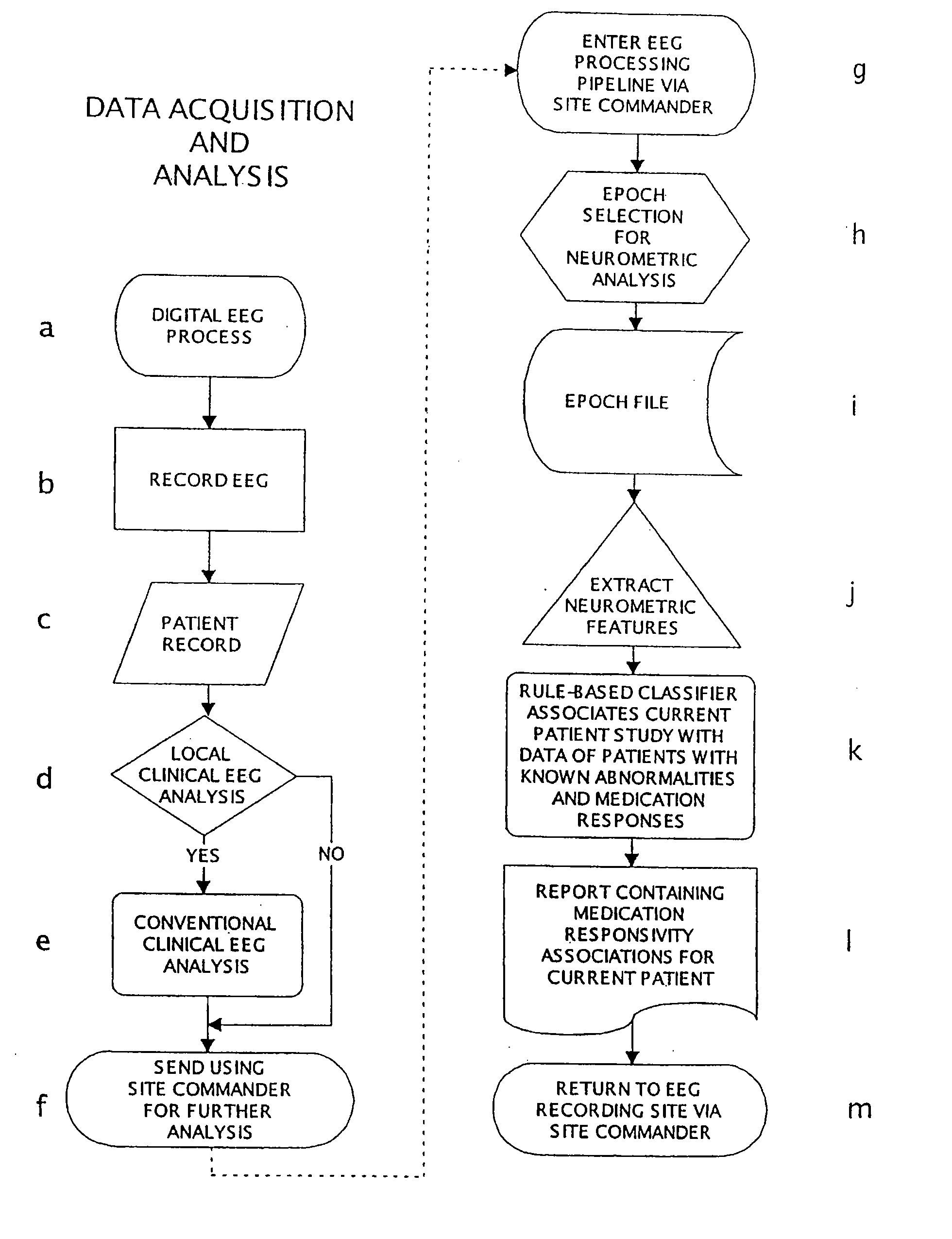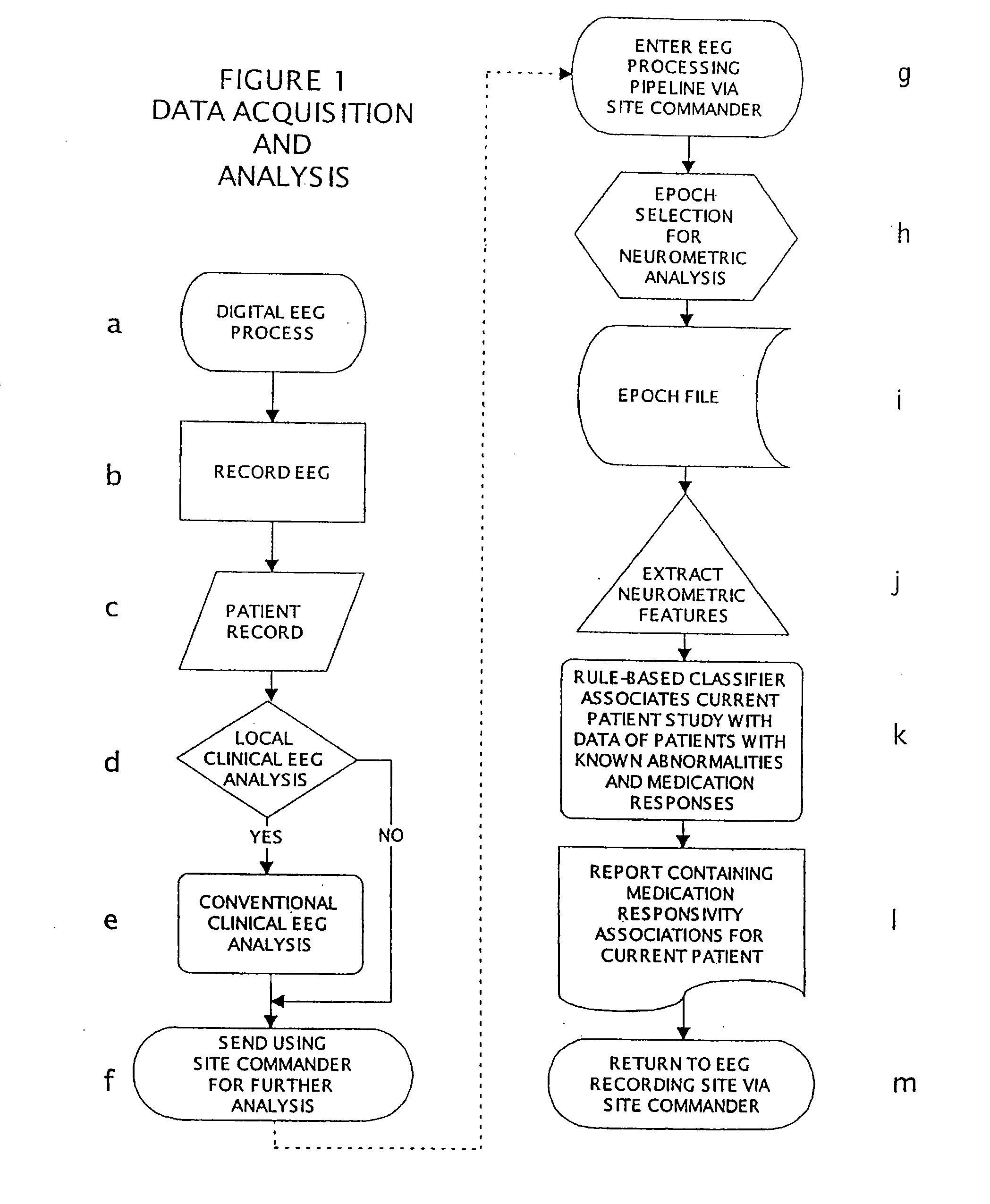Methods For Classifying And Treating Physiologic Brain Imbalances Using Quantitative EEG
a physiologic brain and quantitative eeg technology, applied in the field of methods for classifying and treating physiologic brain imbalances using quantitative eeg, can solve the problems of not always repeatable results, low use of these versions of qeeg in psychiatric assessment and treatment, and inability to correlate well with response patterns to medical treatmen
- Summary
- Abstract
- Description
- Claims
- Application Information
AI Technical Summary
Problems solved by technology
Method used
Image
Examples
example 1
[0111]Guiding Drug Treatment of Patients with Manic Depressive Imbalance Using EEG / QEEG
[0112]Patients with chronic Major Depressive Imbalance (MDD), determined by two senior faculty members, who had been non-responsive to at least two previous medication regimens of adequate dosage(s) and duration were accepted in the study from consecutive evaluations of outpatients at the Veterans Administration Medical Center, Sepulveda. Their lack of response to repeated previous clinical efforts provided a clear baseline from which to note any increase in treatment efficacy with EEG / QEEG information. Human Subjects Committee approval of the protocol was obtained (c.f. FIG. 8). Informed consent was obtained from all study participants.
[0113]Patients were consecutively assigned to control and experimental treatment groups. Every other patient who met study criteria was treated solely on the joint decision of the treating psychiatric resident and a supervising faculty psychopharmacologist. No conc...
example 2
Method for Assessing Physiologic Brain Imbalances and Predicting Pharmacoresponsivity Using EEG / QEEG
[0143]Patients with DSM-III-R diagnoses of 296.xx, 311.00, and 314.xx were prospectively enrolled in a study from consecutive evaluations of a largely (>90%) Caucasian, suburban, population seeking care in a fee for service environment. Patients were evaluated as given below, and treated according to current clinical practice. Retrospective analyses of the relationships between clinical responsivity and neurophysiologic features were performed in order to identify those neurophysiologic features associated with unsuccessful and successful outcomes of pharmacotherapy.
[0144]Two samples of medication-free (no medicine for seven half-lives of the longest half-life agent) patients: those with affective imbalance diagnoses (296.xx or 311.00) and those with attentional imbalance diagnoses (314.xx) were identified by historic and clinical examination. These diagnoses were then confirmed in re...
PUM
| Property | Measurement | Unit |
|---|---|---|
| impedances | aaaaa | aaaaa |
| absolute power | aaaaa | aaaaa |
| relative power | aaaaa | aaaaa |
Abstract
Description
Claims
Application Information
 Login to View More
Login to View More - R&D
- Intellectual Property
- Life Sciences
- Materials
- Tech Scout
- Unparalleled Data Quality
- Higher Quality Content
- 60% Fewer Hallucinations
Browse by: Latest US Patents, China's latest patents, Technical Efficacy Thesaurus, Application Domain, Technology Topic, Popular Technical Reports.
© 2025 PatSnap. All rights reserved.Legal|Privacy policy|Modern Slavery Act Transparency Statement|Sitemap|About US| Contact US: help@patsnap.com



